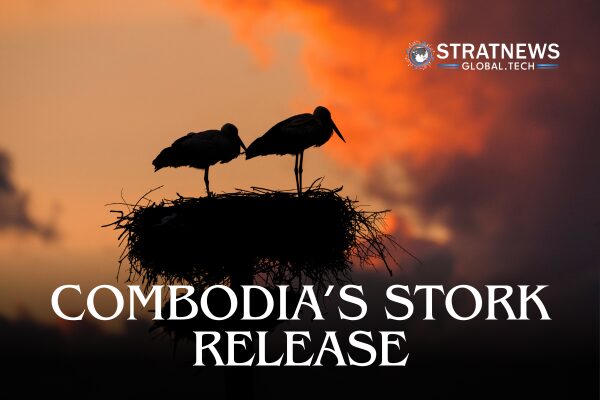Cambodia Releases Captive-Bred Greater Adjutant Storks into the Wild
In a landmark step for wildlife preservation, conservationists in Cambodia have released two captive-bred Greater Adjutant Stork chicks into the wild for the first time. The nine-month-old birds, a male and a female, were fitted with GPS trackers before being released into the Siem Pang Wildlife Sanctuary. The sanctuary, managed by the Rising Phoenix conservation group, offers a safe and natural environment for the young storks.
Jack Willis, head of research at the Angkor Centre for Conservation of Biodiversity (ACCB), explained, “This place is perfect because there are still wild Greater Adjutants in the area. We’re hoping they might join a colony, and the protection provided here by Rising Phoenix and the Ministry of Environment makes it an ideal site.”
A Species on the Road to Recovery
The Greater Adjutant Stork, recognisable by its large black wings, long neck, and imposing stature, was once listed as endangered by the International Union for Conservation of Nature (IUCN). Years of conservation work have improved its status to “Near Threatened,” but the population remains fragile.
According to ACCB, only around 1,500 mature Greater Adjutant Storks remain in the wild, with roughly 200 to 250 in Cambodia and most of the rest in northeast India. Willis warned that their survival is still uncertain, saying, “It could take one big event, and we could lose an awful lot in Cambodia. Captive breeding is vital to prevent extinction.”
Currently, ACCB cares for three rescued breeding pairs at its conservation centre in Siem Reap province, but only one pair has successfully produced chicks. Storks rescued from traffickers often struggle to raise young because they miss learning key parenting skills in the wild.
Preparing the Birds for the Wild
The newly released storks are not expected to immediately integrate into wild populations. In the wild, Greater Adjutants typically migrate to breeding sites at Prek Toal sanctuary in late October, behaviour usually learned from adult storks within colonies.
Despite careful preparation to help the birds adapt to their surroundings, Willis noted that survival during the first few months is crucial. “If they make it through the first three to four months, we’ll consider that a success,” he said.
He added that lessons from this release could inform future efforts. “This allows us to develop the protocol for conserving Greater Adjutants and potentially similar species such as the Lesser Adjutant,” Willis explained.
The release marks a hopeful chapter in Cambodia’s broader fight against poaching and habitat loss, offering renewed promise for one of the world’s rarest storks.
with inputs from Reuters


